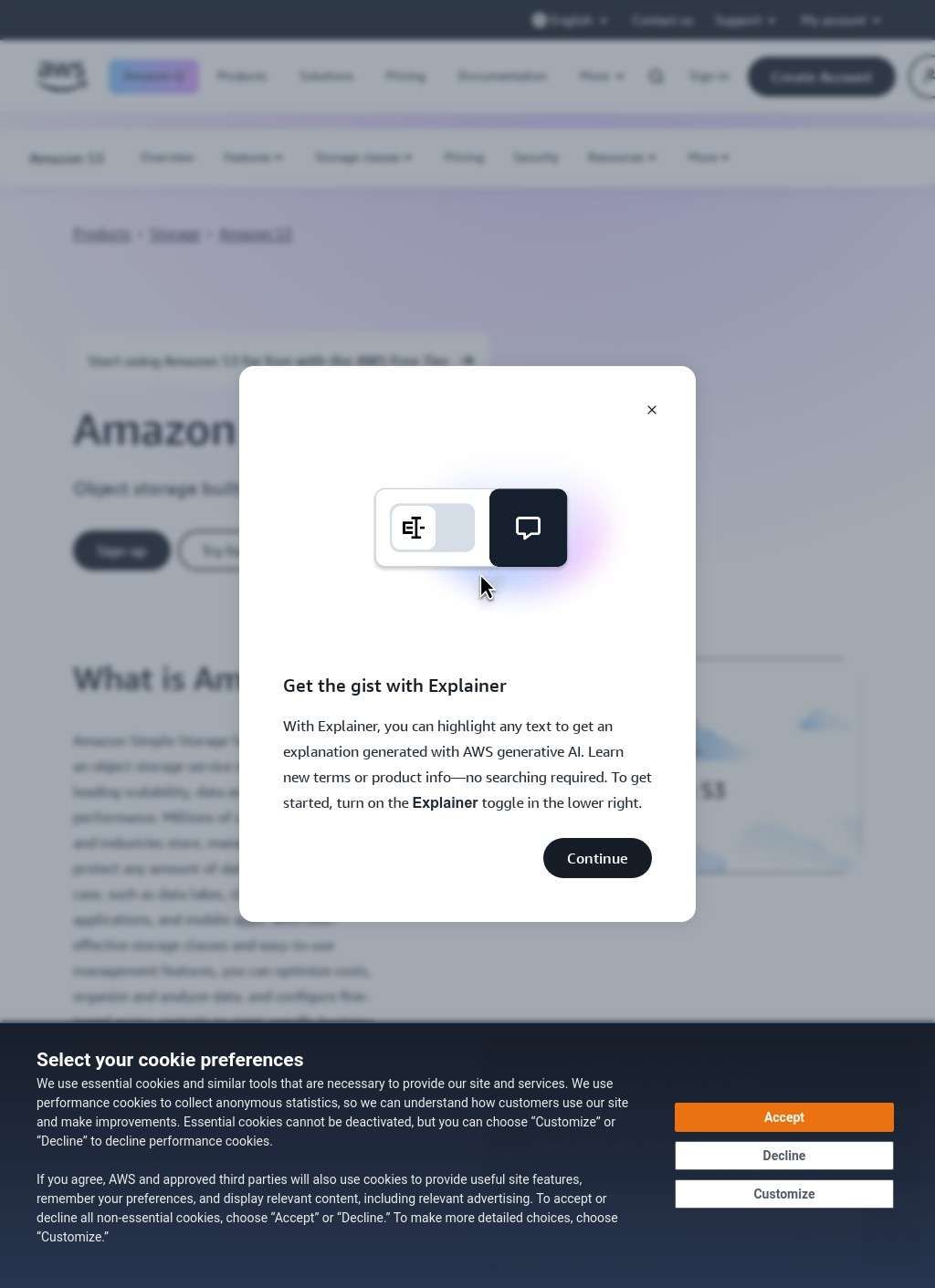Amazon Simple Storage Service has become the foundation for modern cloud data storage, serving millions of customers who collectively store more than 350 trillion objects and generate over 100 million requests per second. This scale demonstrates the service's capacity to handle virtually any storage requirement, from individual mobile applications to enterprise data lakes containing exabytes of information.
The service operates through a straightforward bucket and object model where data files become objects stored within named buckets across AWS regions. This approach provides both simplicity for basic use cases and sophisticated management capabilities for complex enterprise requirements. Users can configure bucket policies, access controls, and lifecycle management rules to automate data movement between storage classes based on access patterns and cost considerations.
S3's storage class variety addresses different performance and cost requirements across data lifecycles. The standard storage class provides immediate access for frequently used data, while Intelligent-Tiering automatically moves objects between access tiers based on usage patterns. Glacier storage classes offer long-term archival options with retrieval times ranging from minutes to hours, enabling organizations to maintain historical data cost-effectively.
Amazon's pricing model eliminates the need for capacity planning by charging only for actual usage without hidden fees or overage charges. The free tier provides 5GB of standard storage, 20,000 GET requests, and 2,000 PUT requests monthly for the first year. This allows organizations to test S3 capabilities and understand usage patterns before committing to larger deployments.
The platform includes built-in security features that address enterprise compliance requirements. S3 supports server-side encryption, access logging, and integration with AWS Identity and Access Management for fine-grained permission control. Organizations can implement bucket policies that restrict access based on IP addresses, user credentials, or request characteristics, meeting various regulatory and security standards.
S3 integrates seamlessly with other AWS services and third-party applications, creating complete data processing workflows. Users can trigger AWS Lambda functions based on object uploads, run analytics with Amazon Athena directly against stored data, or replicate objects across regions for disaster recovery. This ecosystem approach allows organizations to build sophisticated data processing pipelines without managing underlying infrastructure components.
